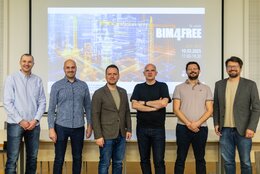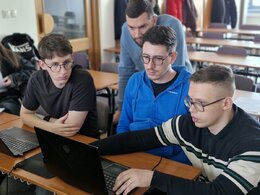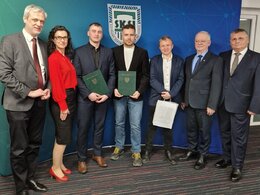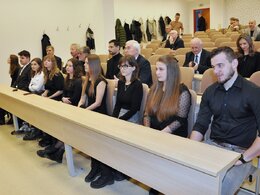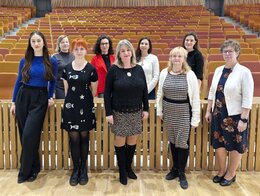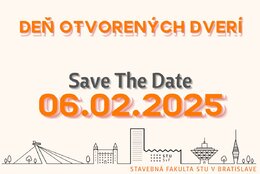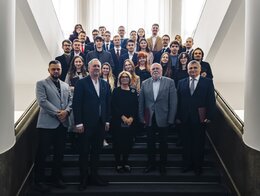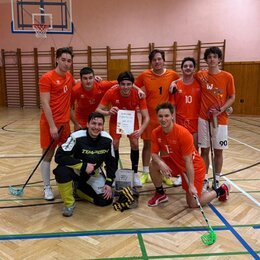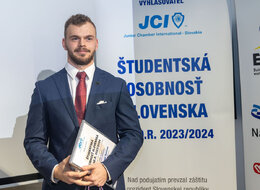E-learning
|
In the years 1996 - 2008, our department was a member of an international working group, which was several times successful in submitting educational projects in the field of steel structures within the Leonardo Da Vinci program - a vocational training program. These projects were: |
WIVISS (1997 – 1999) - Wider Vocational Training in Structural Steelwork (Leonardo da Vinci)Ing. Magdaléna Chladná The WIVISS - Wider Vocational Training in Structural Steelwork program, funded through the Leonardo da Vinci program, was created by combining the comprehensive ESDEP (European Steel Structure Design Training Program) program and modern technology using the benefits of CD-ROM (enormous amount of data and low reproduction costs) and the World Wide Web environment (use of hypertext links, keyword searches, etc.). The contractor of the project was The Steel Construction Institute (SCI) and was attended by experts from universities, research institutes and the steel industry from 16 countries across Europe. A significant feature was also the active involvement of the countries of the former Eastern bloc, which, although as silent partners could not draw on the Leonardo da Vinci package, contributed significantly to the project. |
SSEDTA 1 (1996 - 1999) - Structural Steelwork Eurocodes - Development of a Trans-National Approach - Eurocodes for steel structure design - transnational trainingSSEDTA 2 (2000 - 2001) - Eurocodes for the design of composite reinforced concrete structures - transnational trainingIng. Rudolf Ároch, PhD., Ing. Magdaléna Chladná The main objective of both programs was to facilitate the transition from national to European standards. The project aimed to create high-quality Eurocode learning packages for steel and composite structures that would promote and support a transnational design approach. The resulting product was distributed among teachers, professional organizations, businesses and individuals. After consultations with the business community, the learning packages took two different forms. One part allows self-study of engineers and the other provides a learning package usable for teaching whole groups. The final version of the teaching material contained notes for teachers, notes for students, examples of design and finished presentations of lectures in PowerPoint and was published in the form of a CD-ROM and also as an internet presentation of the whole package. The main users of the final product were engineering and consulting offices as well as individual engineers throughout Europe. Professionals providing vocational training received a ready-made, practical, integrated and consistent learning package. The materials were based on the extensive ESDEP material and the WIVISS project and were updated according to the European standards available at the time of the projects. The whole project met with a very favorable response from practice. |
NFATEC (2001 – 2004) – A New and Flexible Approach to Training for Engineers in ConstructionIng. Rudolf Ároch, PhD., Ing. Magdaléna Chladná The main goal of the NFATEC project was to expand access to materials created in previous projects (ESDEP, WIVISS, SSEDTA 1 and SSEDTA 2) by developing a self-learning tool based on Internet technology, which will combine aspects of smart teaching, testing and lecturer interaction, and students. |
EurIng (2006 - 2008) - international training program for engineersIng. Rudolf Ároch, PhD., Ing. Magdalena Chladná The EurIng project was built on the material created in the previous two projects co-financed by the European Union (SSEDTA and NFATEC) and on the experience gained in these projects. The aim of this project was to teach engineers how to design using new standards, but also to provide them with all the necessary information that will allow them to design steel structures in other countries of the European Union. |
Other projects |
EC FP5 HPRI Access to Research Infrastructures Programme: Tensile Membrane Action and Robustness of Structural Steel Joints under Natural Fire (2002 – 2003)Ing. Magdaléna Chladná The main goal of the project, led by Professor František Wald from CTU, was to collect data on the effects of typical connections between beams and columns in fire conditions after the failure of the World Trade Center. As part of the project, a full-scale fire test was performed in January 2003 on an eight-story composite steel and concrete building at the BRE Fire Research Laboratory in Cardington. The full test also provided an opportunity to examine the behaviour of composite slabs in a multi-storey steel frame building and to verify the results obtained with numerical modeling software Vulcan compared to the experimental results. |
GAČR 103/07/1142 - Fire test on an experimental building in Mokrsko (2008)Ing. Magdalena Štujberová, PhD. The project, led by Professor František Wald from CTU, follows on from seven large fire tests carried out in a laboratory in Cardington, Great Britain, from 1998 to 2003, followed by several others. The aim of the test in Mokrsko was to expand the knowledge gained so far about the interaction of individual structural elements in a structure loaded by fire. |
|
Slovak-Greek Bilateral Cooperation Working Programme on Science and Technology: Analysis, Design and Manufacturing Recommendations for Glass-Aluminium Facades with Improved Strength Properties According to Eurocode 9 (2002) |
Action Austria - Slovakia: New Technologies for Improvement of the Quality of Buildings - Mixed Building Technology, Joint Technology and Glass Technology (2001)Ing. Rudolf Ároch, PhD., Ing. Magdaléna Chladná |
Membership in International Associations
|
Ároch, R. - IABSE (International Association for Bridge and Structural Engineering) |
|
Ároch, R. - ECCS (European Convention for Constructional Steelwork - TC 7 Thin Walled Structures; TC 10 Structural Connections) |
|
Brodniansky, J. - IASS (International Association for Space Structures - WG6 – Tension Structures; WG 20 – Teaching of Shell and Spatial Structures) |
|
Brodniansky, J. jr. - IASS ( International Association for Shell and Spatial Structures – WG04 Mast and Towers) |
|
Magura, M. - IASS ( International Association for Shell and Spatial Structures – WG6 – Tension and Membrane Structures; WG13 – Computational Methods) |
|
Slivanský, M. - IASS ( International Association for Shell and Spatial Structures – WG6 – Tension and Membrane Structures; WG12 – Timber Spatial Structures) |
|
Slivanský, M. - CEN/TC 250/SC 11 - Structural Glass, European Committee for Standardisation |
|
Sandanus, J. - IASS ( International Association for Shell and Spatial Structures ) – člen pracovnej skupiny – Timber Structures |
International cooperation
|

